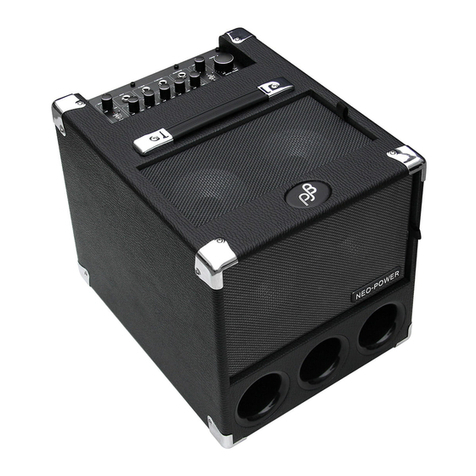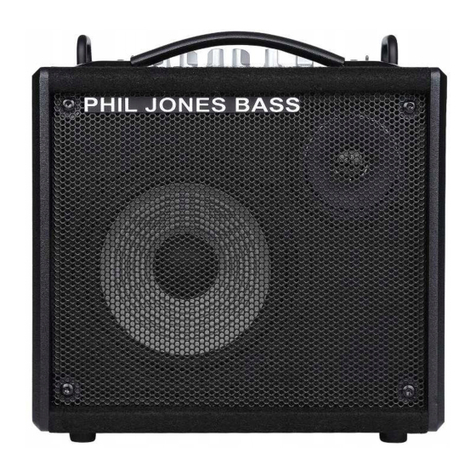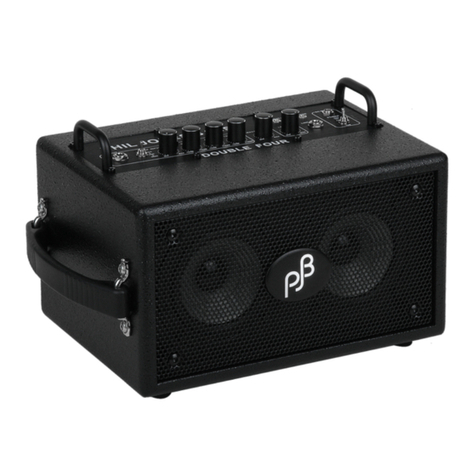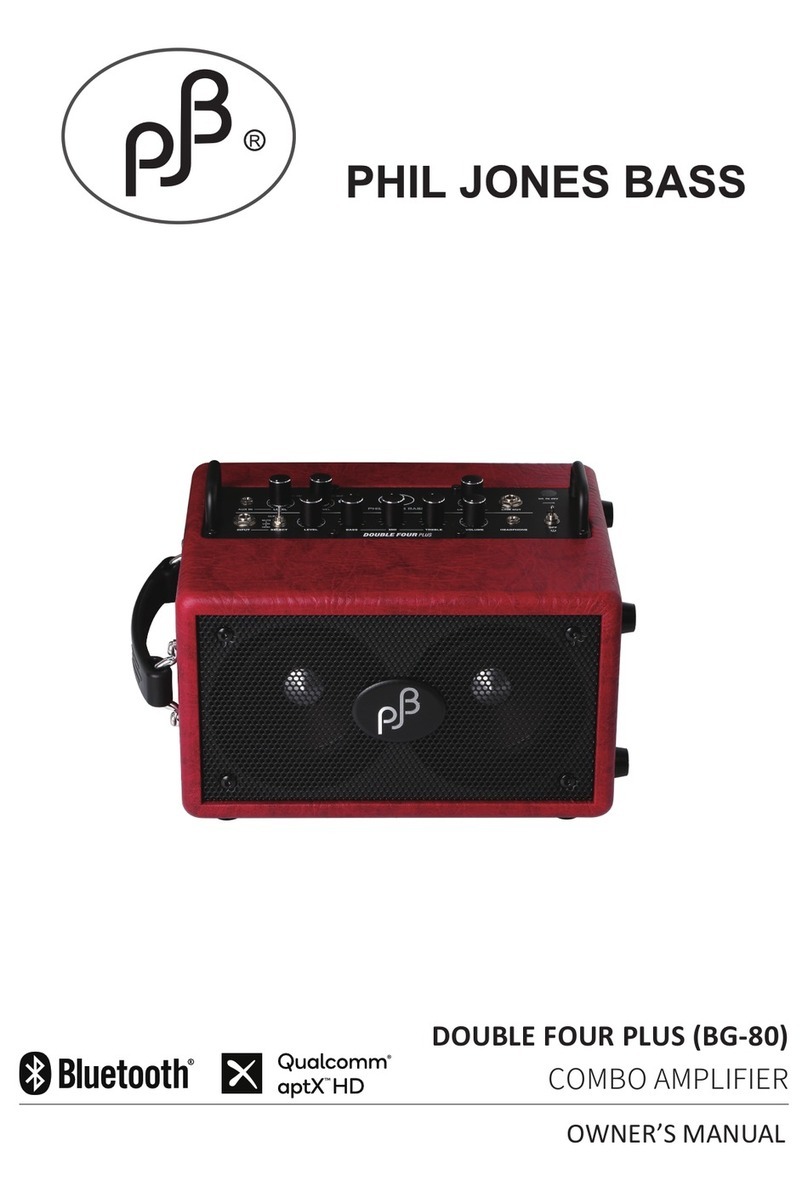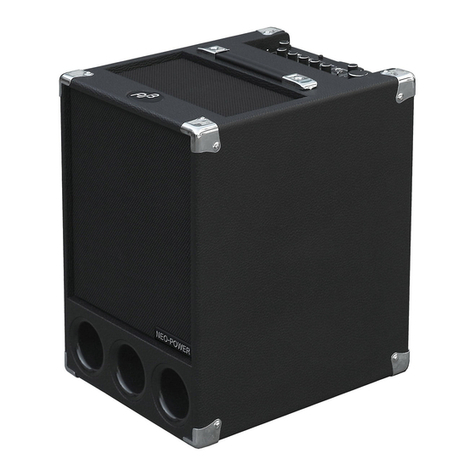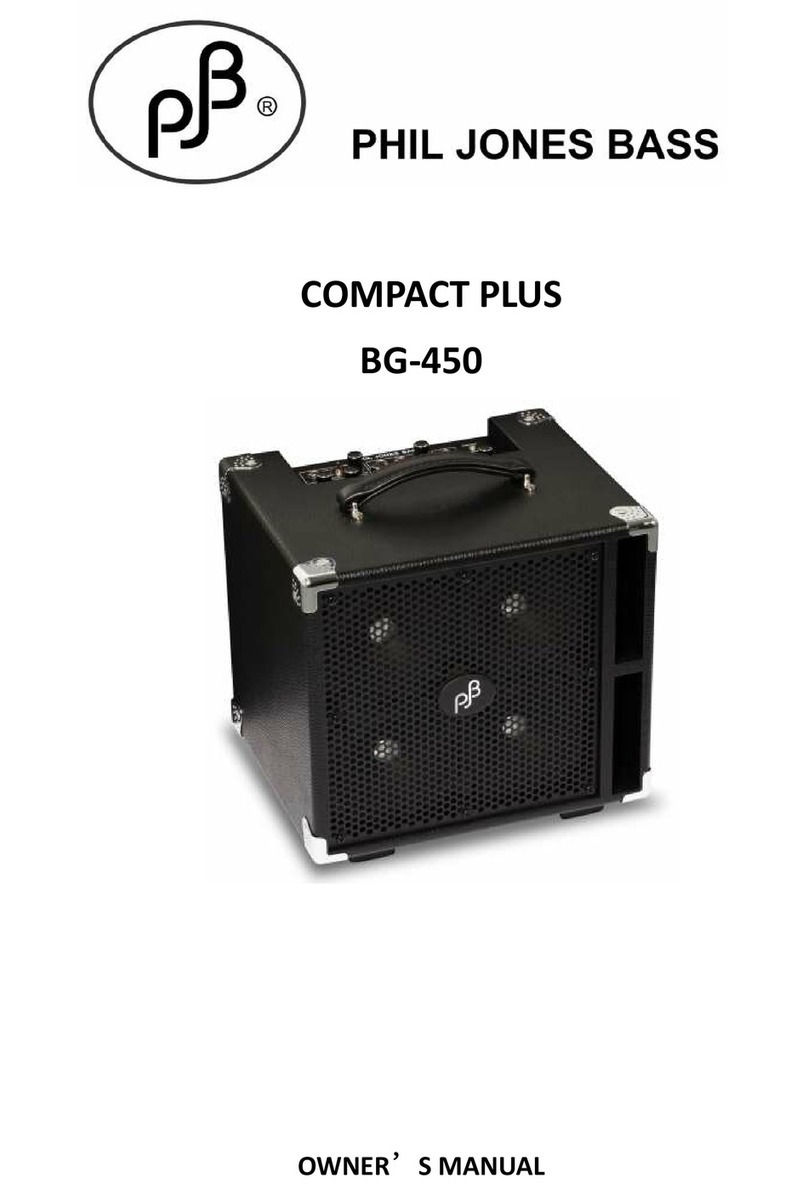
Power and Impedance Matching
Solid state amplifiers are known as constant voltage devices. This means the
amplifier will maintain a certain voltage to the load, just like an AC wall socket will
put out the same AC voltage whether it connects to one or many light bulbs.
Power increases as more load is added on the amplifier. In other words, the
current will double if 2 x 8 ohm speakers are connected instead of one. The D-400
works from any high impedance down to 4 ohms. The total speaker impedance
can be 16, 12, 8, 6 or 4 ohms or between these. What matters is that the current
does not exceed its 4 ohm load. The lower the impedance, the greater the current
and since the voltage stays pretty much the same, the power is increased. In
reality there is always a small voltage drop in amplifier speaker output as the
speaker load is increased. The lower the speaker impedance, the greater the load
is on the amplifier.
Watts and Loudness
To the human ear an increase in loudness is not linear. For example 300 watts is
not 3 times louder than 100 watts from the same speaker. In fact it is just
noticeably louder. We need ten times the wattage for us to recognize a doubling in
volume. So 1000 watts will sound twice as loud to us as 100 watts.
Loudspeakers also vary in efficiency with frequency. Most loudspeakers are
louder in the mid range than in the bass or extreme high frequencies, which is one
reason we need EQ in am amplifier. An EQ control is a frequency selective volume
control: It boosts or cuts level at a specific frequency. So excessive boosting of
frequencies, especially on bass frequencies where almost 90% of the amplifier
power is used can rob a bass system of headroom.
Speaker Positioning and EQ
Nearly all bass speakers are Omni-directional at all the fundamental bass tones from
about 200Hz (the fundamental of a G string on 12th Fret) down to the lowest
frequency a speaker can reproduce. The open E is 41.2Hz and open B string is 31Hz.
Mid range and high frequencies tend to be directional. This is why many players angle
their cabinets to ear level so they can hear the definition better.
Because bass frequencies radiate all around the cabinet, the bass will sound weaker
when the cabinet is placed on a large stage with no boundaries. By placing the
speakers close to a wall or even to a corner, the bass frequencies will appear to be
much stronger and it may not need to have much boost on EQ to allow the amp to have
more headroom.
By careful positioning of your bass speakers, you may be able to get a fuller low
frequency without the use of boosting too much EQ. This will give not only give your
amp more headroom, but also put less stress on your speakers.
6
English



